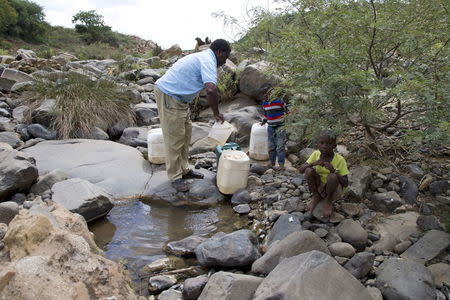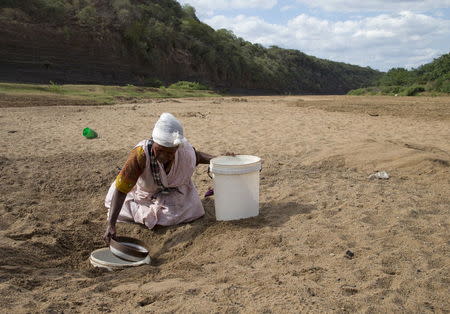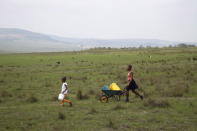South African winter weather forecast uncertain, chances of rainfall seen
JOHANNESBURG (Reuters) - The winter forecast for drought-hit South Africa has become increasingly uncertain as an El Nino weather pattern persists but chances remain for above-average winter rainfall for most of the country, the South African Weather Service said on Friday. Winter rainfall would be welcome to top up dam levels and restore moisture to grazing lands and farms parched by a drought that saw South Africa last year record its lowest annual rainfall levels since comprehensive records began in 1904. Temperatures across much of the country also scaled historic highs in January. "Despite conditions ... that may be conducive for winter type rainfall and cooler temperatures over South Africa, the forecast is dominated by a huge uncertainty for the rainfall and temperature forecast," the Weather Service said in its monthly forecast looking five months ahead. South Africa will likely harvest 7.054 million tonnes of the maize in 2016, 29.1 percent less than the 9.95 million tonnes reaped last year because of the drought and late plantings, a government agency said on Tuesday. Maize is a staple in Africa's top producer of the grain and the price of the white variety used for human consumption doubled last year, fueling food price inflation which the central bank has repeatedly cited as a major concern. South Africa's weather woes have been largely attributed to a powerful El Nino system, a warming of ocean surface temperatures in the eastern and central Pacific that occurs every few years with global consequences. The Weather Service said while El Nino was persisting, there was the possibility of a La Nina system forming in the late southern hemisphere spring in September or October. That represents periods of below-average sea surface temperatures across the east-central Equatorial Pacific and typically has the opposite impact of El Nino, and so it could herald above average rainfall in the next maize growing season. (Reporting by Ed Stoddard; Editing by James Macharia)

 Yahoo Finance
Yahoo Finance 









